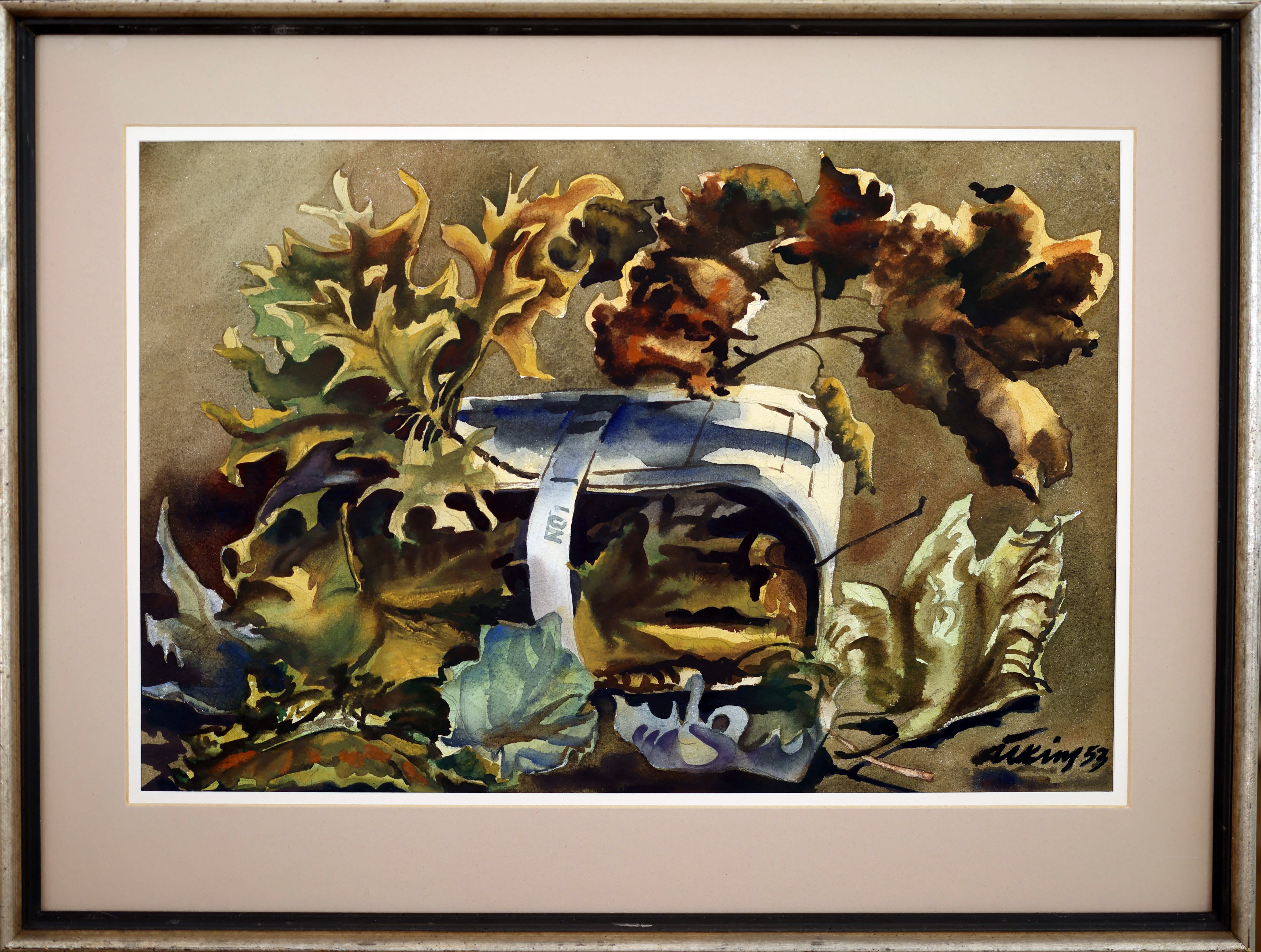Ernest Caven Atkins (December 1907-December 22, 2000), better known as Caven Atkins, was a Canadian artist with a rich and diverse career that left a lasting mark on the world of art. Born in London, Ontario, his life's journey would take him through various artistic endeavors, culminating in a legacy that continues to be celebrated.
Atkins' artistic path began with formal education under the guidance of future Group of Seven member Lionel LeMoine FitzGerald at the Winnipeg School of Art from 1925 to 1928. This early exposure to art education marked the inception of his lifelong commitment to the creative world.
As he honed his artistic skills, Atkins ventured into the realm of commercial art. His time at Brigden's commercial art firm brought him into contact with influential figures in the Canadian art scene, including Bertram Brooker and Charles Comfort. The experience at Brigden's not only expanded his artistic horizons but also introduced him to the world of German expressionism, which would later become a strong influence on his work.

Caven Atkins; Dam
Atkins' passion for art extended beyond his personal practice; he was a dedicated educator. He served as an instructor at the Winnipeg School of Art from 1930 to 1934, sharing his knowledge and nurturing the talents of emerging artists. This commitment to teaching was a defining aspect of his career, and he went on to teach at various institutions, including Queen's University summer school and the Ontario College of Art.
In 1945, while teaching at the Ontario College of Art, Atkins shared his expertise by writing an article for Canadian Art magazine on using different media, further contributing to the development of artistic knowledge.
During World War II, Atkins was not officially selected as a war artist, but his dedication to the war effort was unwavering. He captured the scenes of the Toronto Shipbuilding Company in 1942, recording the day and night activities in a painting and 24 drawings. These works were later donated to the National Gallery of Canada in 1951, highlighting the home front's significance during the war period.
After the war, like many artists, Atkins faced challenges in finding employment. In 1945, he relocated to Birmingham, Michigan, where he worked as an illustrator and designer for the Ford Motor Company until his retirement. Despite his extensive artistic career, he never returned to live in Canada.
 Caven Atkins; Leaf Basket
Caven Atkins; Leaf Basket
Caven Atkins' contributions to the art world were celebrated through various exhibitions and retrospectives. In 1945, a retrospective of his watercolours was held at Hart House, which is now part of the Art Museum of Toronto. In 1979, the Art Gallery of Windsor presented a survey titled "A Retrospective Exhibition of Selected Works by Caven Atkins Spanning Fifty Years of the Artist's Life," curated by Ted Fraser.
Additionally, in 1987, the Art Gallery of Windsor organized a circulating exhibition titled "Caven Atkins: The Winnipeg Years," also curated by Ted Fraser.
Atkins' artistic legacy lives on in the collections of several prestigious institutions, including the National Gallery of Canada, the Canadian War Museum, the Art Gallery of Algoma, the Art Gallery of Ontario, the Art Gallery of Windsor, the Beaverbrook Art Gallery in Fredericton, and the Remai Modern in Saskatoon.
Throughout his career, Caven Atkins was an active member of numerous art associations, including the Manitoba Society of Artists, the Canadian Group of Painters, the Canadian Society of Graphic Art, and the Canadian Society of Painters in Water Colour, of which he served as president. He also belonged to the Ontario Association of Teachers of Art, further emphasizing his dedication to the art community.
Ernest Caven Atkins' life was a remarkable journey through the world of art, teaching, and creative exploration. His influence on Canadian art and his role as an educator continue to be remembered and celebrated, making him a significant figure in the history of Canadian art.


